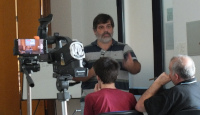This post is a review for Computing Reviews for Free and open source software and other market failures , a article published in Communications of the ACM
Understanding the free and open-source software (FOSS) movement has, since its beginning, implied crossing many disciplinary boundaries. This article describes FOSS’s history, explaining its undeniable success throughout the 1990s, and why the movement today feels in a way as if it were on autopilot, lacking the “steam” it once had.
The author presents several examples of different industries where, as it happened with FOSS in computing, fundamental innovations happened not because the leading companies of each field are attentive to customers’ needs, but to a certain degree, despite them not even considering those needs, it is typically due to the hubris that comes from being a market leader.
Kemp exemplifies his hypothesis by presenting the messy landscape of the commercial, mutually incompatible systems of Unix in the 1980s. Different companies had set out to implement their particular flavor of “open Unix computers,” but with clear examples of vendor lock-in techniques. He speculates that, “if we had been able to buy a reasonably priced and solid Unix for our 32-bit PCs … nobody would be running FreeBSD or Linux today, except possibly as an obscure hobby.” He states that the FOSS movement was born out of the utter market failure of the different Unix vendors.
The focus of the article shifts then to the FOSS movement itself: 25 years ago, as FOSS systems slowly gained acceptance and then adoption in the “serious market” and at the center of the dot-com boom of the early 2000s, Linux user groups (LUGs) with tens of thousands of members bloomed throughout the world; knowing this history, why have all but a few of them vanished into oblivion?
Kemp suggests that the strength and vitality that LUGs had ultimately reflects the anger that prompted technical users to take the situation into their own hands and fix it; once the software industry was forced to change, the strongly cohesive FOSS movement diluted. “The frustrations and anger of [information technology, IT] in 2024,” Kamp writes, “are entirely different from those of 1991.” As an example, the author closes by citing the difficulty of maintaining–despite having the resources to do so–an aging legacy codebase that needs to continue working year after year.

















